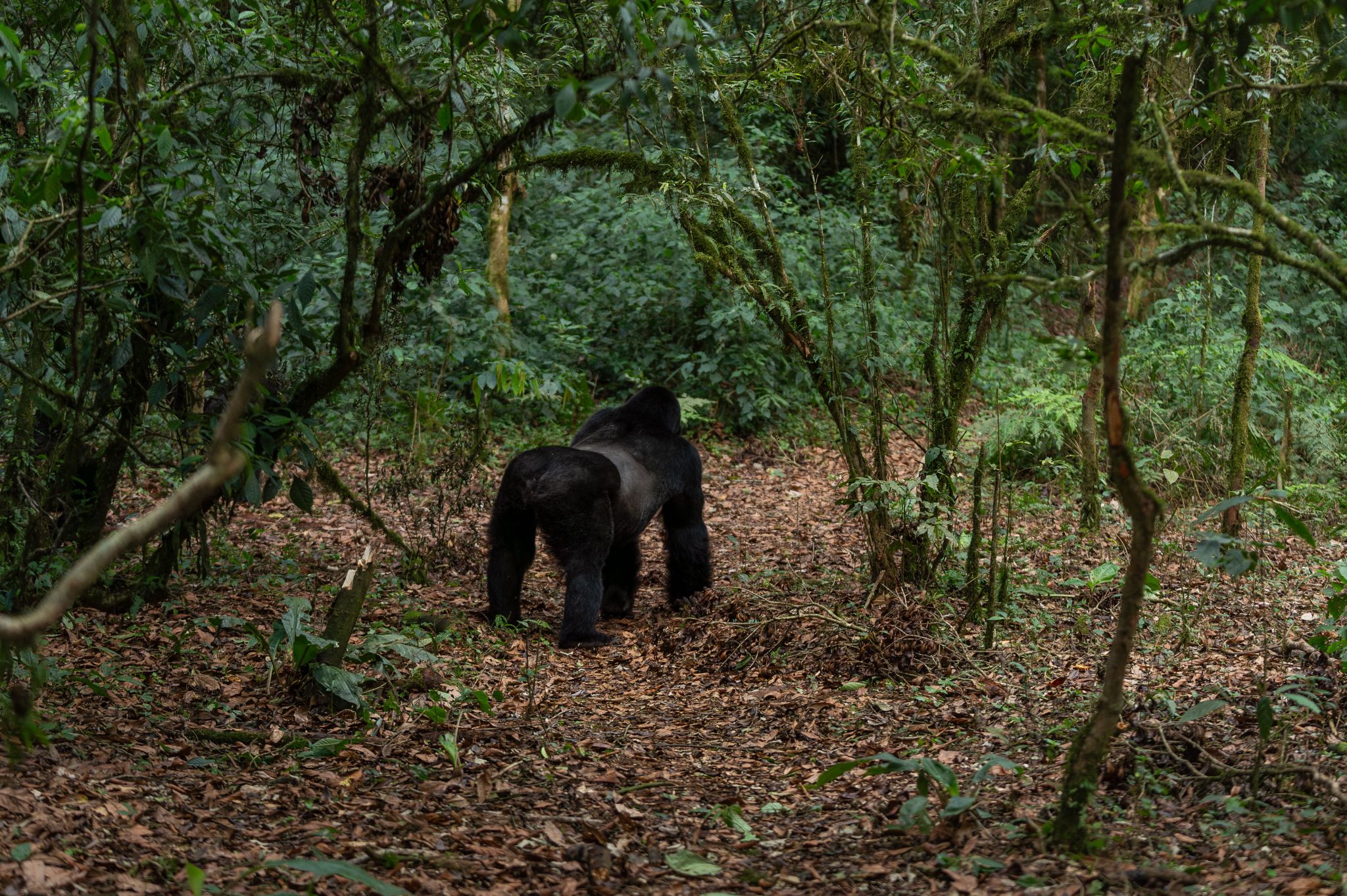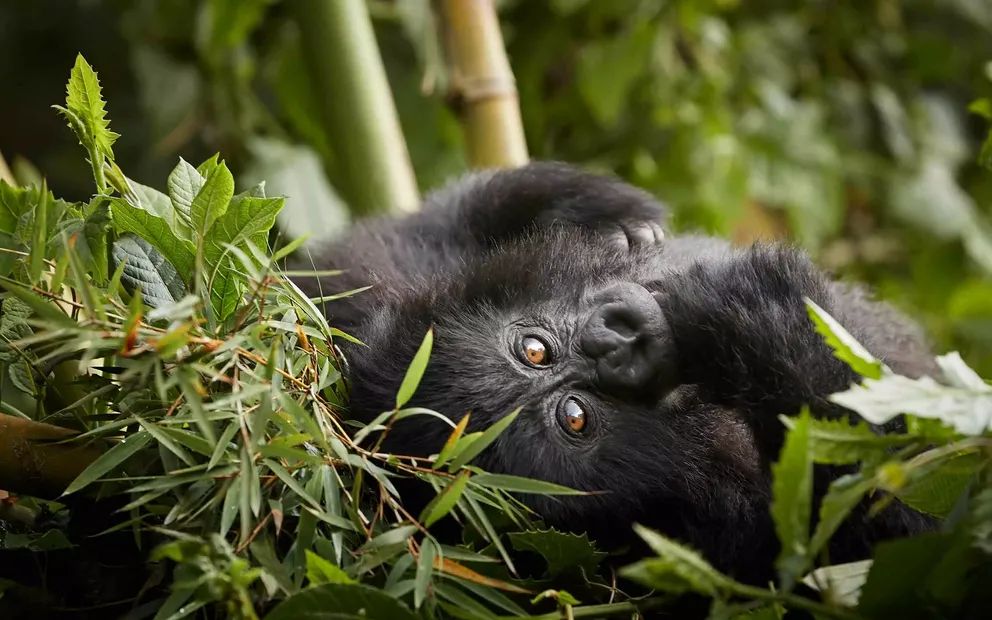TOP SILVER BACK GORILLA FACTS YOU NEVER KNEW 2025/26: Discover jaw‑dropping silverback gorilla secrets—from their Superman‑level strength to their secret “forest gardeners”
Silverback gorillas are the powerful yet gentle leaders of gorilla troops, standing 4–6 ft tall (1.2–1.8 m) and weighing 300–485 lb (136–220 kg) with a distinctive silver saddle on their backs by age 12.
They lead family groups through ritualized displays rather than violence and play a keystone “forest gardener” role by dispersing seeds from over 75 plant species Found in high‑altitude Virunga and lowland Congo forests, they face threats from poaching, habitat loss, and disease, yet focused conservation efforts have helped mountain gorilla numbers rebound past 1,000 individuals.
Their rich communication—25+ vocalizations, chest‑beats, gestures, and scent signals—underscores their intelligence and social complexity. Protecting silverbacks safeguards entire ecosystems and supports local communities through eco‑tourism.

TOP SILVER BACK GORILLA FACTS YOU NEVER KNEW 2025/26
The Biology and Anatomy of Silverback Gorillas
- Silverbacks exhibit extreme sexual dimorphism, with adult males standing 4–6 ft (1.2–1.8 m) tall and weighing 300–485 lb (136–220 kg).
- Their arms span up to 8 ft (2.4 m), built for powerful knuckle‑walking and occasional upright charging at 25 mph (40 km/h).
- A pronounced sagittal crest on the skull anchors massive jaw muscles, delivering a crushing bite force of 1,300 PSI to process tough vegetation.
- A dense undercoat beneath their coarse fur insulates against sub-zero nights in montane habitats (1,650–3,790 m) IUCN Red List.
- Internally, an enlarged caecum and colon ferment high‑fiber diets, while a 500 cc brain supports complex social cognition rather than brute force alone.
Social Structure and Behavior of Silverback Gorillas
- Silverbacks head troops of 5–50 individuals (avg. 8–12), comprising adult females, juveniles, and offspring World Wildlife Fund.
- Conflict is solved with chest‑beating, branch‑shaking, and hoots—not fights—keeping injuries rare PMC.
- Females mature at 7–8 years, give birth every 4–6 years, and raise just 3–4 offspring in a lifetime, making population recovery slow.
- Silverbacks occasionally babysit infants and join grooming sessions, reinforcing bonds and troop cohesion WWF.
The Diet of Silverback Gorillas: What Do They Eat?
- Silverbacks are mega‑herbivores: 67% fruit, 17% leaves/stems, 3% insects (termites, caterpillars) per Seaworld data SeaWorld.
- Western lowland gorillas consume up to 25 kg of figs and bananas daily during peak seasons.
- They forage on 75+ tree species, dispersing seeds—mainly Uapaca, Landolphia, Cissus—in their feces, fueling forest regeneration Berggorilla & Regenwald Direkthilfe e.V..
- Mountain gorillas rely more on bamboo shoots, nettles, and herbs at high elevations, eating 140+ plant species annually.
Habitat and Distribution of Silverback Gorillas
- Mountain gorillas (G. b. beringei): 1,650–3,790 m in the Virunga Volcanoes and Bwindi Impenetrable Forests.
- Western lowland gorillas (G. g. gorilla): sea level to 1,100 m in swamps and terra firma across Cameroon, Gabon, and DR Congo.
- Grauer’s gorillas (G. b. graueri): eastern DR Congo lowlands, suffering a 77% decline over one generation.
Home ranges span 4–40 mi² (10–100 km²), shrinking due to logging, agriculture, and mining.
Conservation Status and Threats Facing Silverback Gorillas
- Mountain gorillas: Endangered, ~1,063 individuals as of the 2024 gorilla population carried out by the Gorilla Doctors and increasing thanks to anti-poaching and veterinary care.
- Western lowland gorillas: Critically Endangered, ~360,000 individuals, still declining from Ebola, bush meat hunting, and deforestation.
- Grauer’s gorillas: Critically Endangered, with rapid losses near mining operations.
Key threats: poaching, disease transmission from humans, habitat fragmentation, and civil unrest. - Eco‑tourism revenue sharing, community education, and “bush meat‑free” mineral supply chains are vital mitigation strategies.
Unique Communication Methods of Silverback Gorillas
Silverback gorilla communication methods:
Silver-backed gorillas deploy a multimodal language of:
- Chest‑beats: rapid for alarm; slow for reassurance.
- Vocalizations: 25+ grunts, hoots, roars coordinate movements and calm young.
- Gestures: “play face” (bared teeth), lip‑pout threats, and hand waves convey intent.
- Scent marking: silent aroma signals advertise presence or stress levels.
- Grooming & gentle touches: strengthen social bonds and soothe infants.
The Role of Silverback Gorillas in Their Ecosystem
As ecosystem engineers, they:
- Prune fast-growing plants, preventing monocultures
- Disperse seeds widely, ensuring diverse forest regeneration.
- Create forest clearings that let sunlight nourish understory species.
- Drive eco‑tourism that funds local schools, clinics, and anti-poaching patrols.
Interesting Myths and Misconceptions about Silverback Gorillas
- Myth: Silverbacks are mindless brutes.
Reality: Ritual displays—chest‑beats & hoots—resolve conflicts; violence is rare. - Myth: They hunt large mammals.
Reality: < 3% of the diet is insects; they never prey on big game. - Myth: All troops are identical.
Reality: Troop size, structure, and behavior vary by subspecies and habitat. - Myth: Silverbacks shun infants.
Reality: They babysit, groom, and defend the young in rare displays of paternal care.
Conclusion: Why We Should Protect Silverback Gorillas
Silverbacks embody raw strength and deep empathy, yet their future hangs on human choices. Conserving them secures healthy forests, stable watersheds, and thriving local communities. Continued support for anti-poaching patrols, responsible eco‑tourism, disease‑prevention protocols, and “bush meat-free” minerals will ensure these gentle giants roar through Africa’s forests for generations.
We recommend booking your gorilla trekking safari with Agasaro Safaris, because we ensure sustainable and conservation of these rare safari animals is paramount and would wish to preserve them for the future generations.
Book now your Gorilla tracking Safari
Related Article: Gorilla Trekking Uganda
